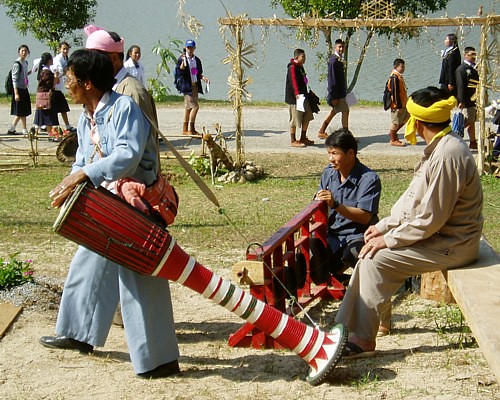
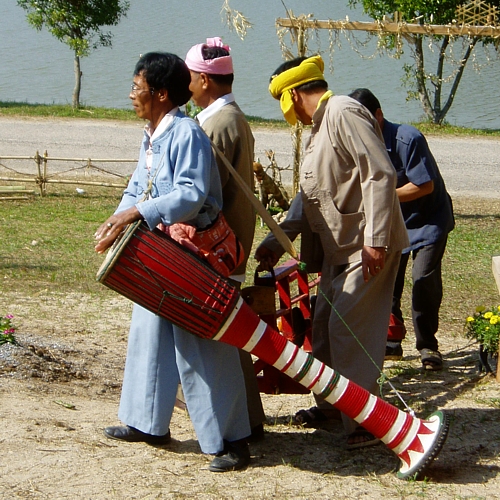
'toe' dance - with 'toe' being described as a lion, deer, antelope, or sheep:
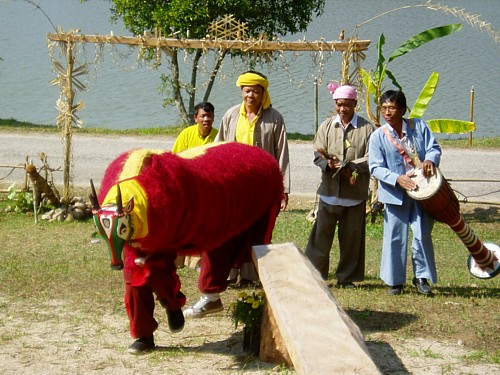
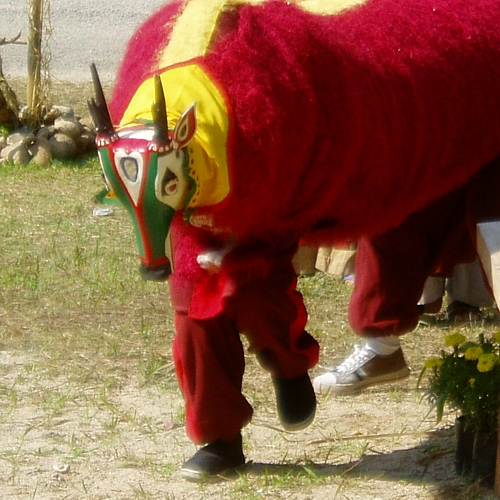
What many tour brochures, tour guides & tourists refer to as the 'peacock dance', when the female dancer is supposed to be a half human half bird kinnari (kyingare; kinnara or kyingalar for the male role):
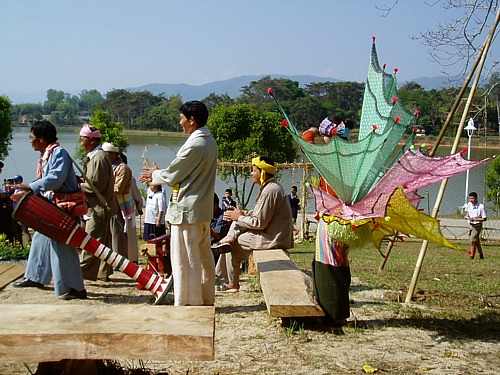
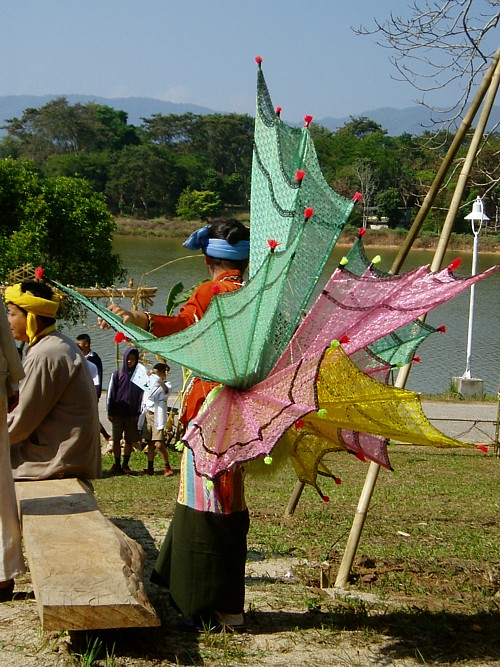
Unlike the Tai Lue who wrap a white cloth around their heads, the Tai Yai use other colours (usually light pink) & have very neat folds in the cloth:
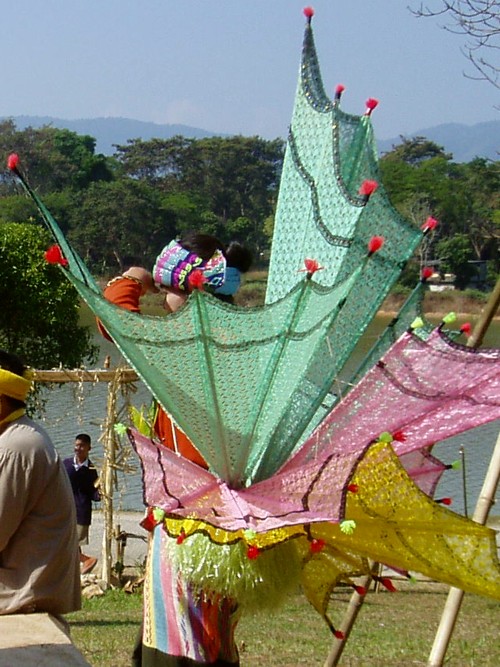
Wings held in place with raffia string:
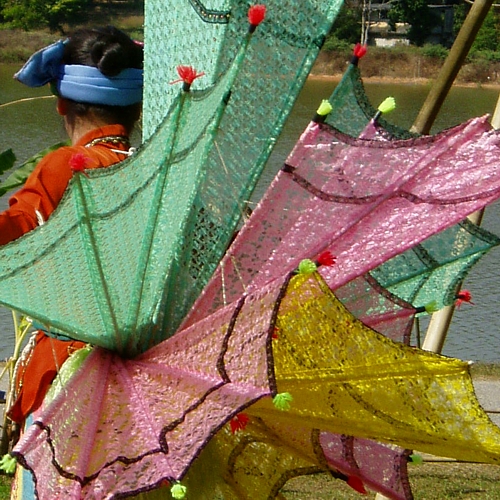
Raffia string tail:
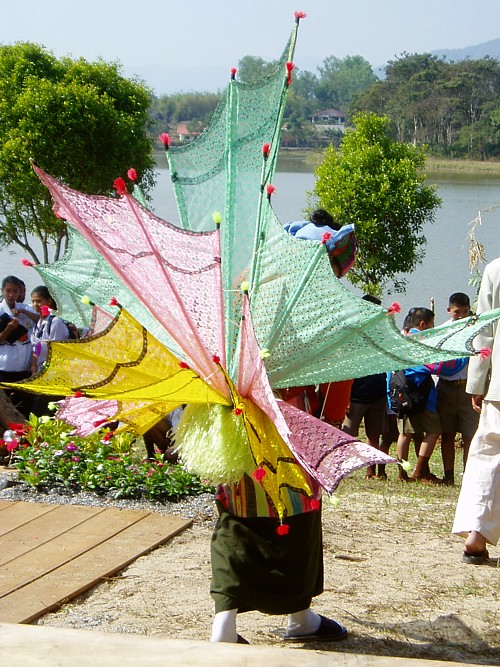
Too busy watching - didn't take photos of the actual dances. These two dances were traditionally performed during Poy Awk Waa (Boun Ok Phansa), with the 'toe' representing all 4-legged creatures & the kinnari all 2-legged creatures celebrating the return of Buddha to earth after preaching to his mother in Tavatimsa heaven.


No comments:
Post a Comment